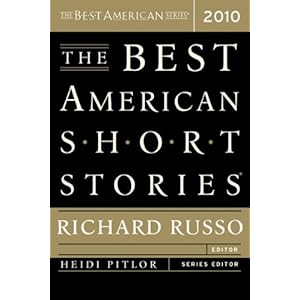
Digital Photography Secretsby David Peterson Click Here! How to
Southern Gothic is an American subgenre of the Gothic style, which is probably most customary to you from the Brontë sisters of Victorian England. (No, we're not talking Hot Topic here.) Like its European progenitor, the Southern Gothic style relies heavily on the supernatural - only with less "O, Heathcliffe!" and more "Oh no, racism!" (Unlike Gothic novels, Southern Gothic novels are more concerned in uncovering group crimes and injustices than being gloomy for gloomy's sake.) EleMents of the grotesque are also coarse to both genres, but can take the form of actual physical gore or just very flawed characters that are somehow tolerable enough to remain interesting. (See also: "O, Heathcliffe!")
William Faulkner is known to have been especially good with the Southern Gothic style, and many American children read his eerie and disgusting "A Rose for Emily" as early as junior high school. This short story, which starts with a funeral and ends with the discovery of a decades-old corpse, reminisces on the life of Miss Emily Grierson, the recently deceased town spinster. As it turns out, her dad was a bit overbearing, and though we don't know if there was any abuse involved, let's just say she didn't exactly get to break her curfew until she was about 35. When the old man ultimately meets his maker, Emily refuses to admit he is dead or leave the house for three days - which wouldn't be so creepy if his decaying body weren't still in it.
American Stories
The even creepier part, however, is that this isn't the same corpse that turns up in Emily's house at the end of the book; that one belonged to her once and short-term boyfriend, who wined her, dined her, and tried to bail on her a few years after her dad died. Boy did he pick the wrong woman. While Emily is clearly deMented, her dad's mistreatMent and the resulting psychological damage nevertheless make her a sympathetic character. So sympathetic, in fact, that the townspeople help cover the murder by spreading lime colse to her house when it starts to smell. (Won'T you Be my Neigh-Bor!) So let's recap just how "A Rose for Emily" stacks up as a Southern Gothic novel. Death? Check. Injustice? Check. The grotesque? duplicate check. A scary shut-in with a mysterious past in a seemingly haunted house? Checkmate.
Now that we've got a sense of what the genre's all about, let's do a limited comparison. One of America's most widely-read and favorite Southern Gothic novels is To Kill a Mockingbird, which chronicles the timid childhood interactions of Scout and Jem Finch with the local group outcast, Boo Radley. This book may not strike you as particularly gothic, especially if you grew up wanting to befriend Jem and Scout (and possibly even Boo), or to have Atticus for a dad, but technically speaking, it fits. Let's take a look at those criteria again.
The supernatural. Okay, so Mockingbird isn't exactly supernatural, but narrated straight through the eyes of a terrified six-year old, it might as well be. Scary guy locked in his house for decades because he probably stabbed his dad in the leg with scissors? It ain't natural, that's for sure. The only thing holding Boo from becoming a full-blown Emily Grierson is the fact that he isn't hiding any bodies - that we know of. Injustice. Boy howdy! roughly every character in the novel is at least somewhat racist, together with our lovable narrator from time to time. The plot centers colse to the trial of Tom Robinson, a black man who is wrongly accused - and ultimately convicted - of raping a white woman - who concocted the story to hide her crush on Tom from an abusive father. When Tom tries to leave prison, he is shot no less than seventeen times. You know, just in case. The grotesque. While To Kill a Mockingbird isn't gory, some of its characters can be downright foul. Mrs. DuBose is a great example of a grotesque character; she's a humorless old bigot with an unnecessarily possessive attitude toward her camellias, but since we later find out she's trying to kick a nasty morphine addiction, we end up feeling kind of bad for her. Sometimes, a drug habit or an overbearing father is all it takes.
So while the two stories may seem very dissimilar at first glance, they share a particular aggregate of gothic elements that allows them to unglamorously eye group and cultural issues of the South - either they be racism and bigotry or plainly the outdatedness of the "Southern Belle" arrival to dating. You resolve which is scarier.
Southern Gothic Writing in "A Rose For Emily" and "To Kill a Mockingbird"
Digital Photography Secrets by David Peterson Click Here!
See Also : USB Battery Charger & Accessories Deals Sport Book Cat Toys Heart Rate Monitor Timex
![The Best American Short Stories 2010 (The Best American Series (R)) [Paperback]]( http://ecx.images-amazon.com/images/I/417-fWjfIYL._SL500_AA300_.jpg )

No comments:
Post a Comment